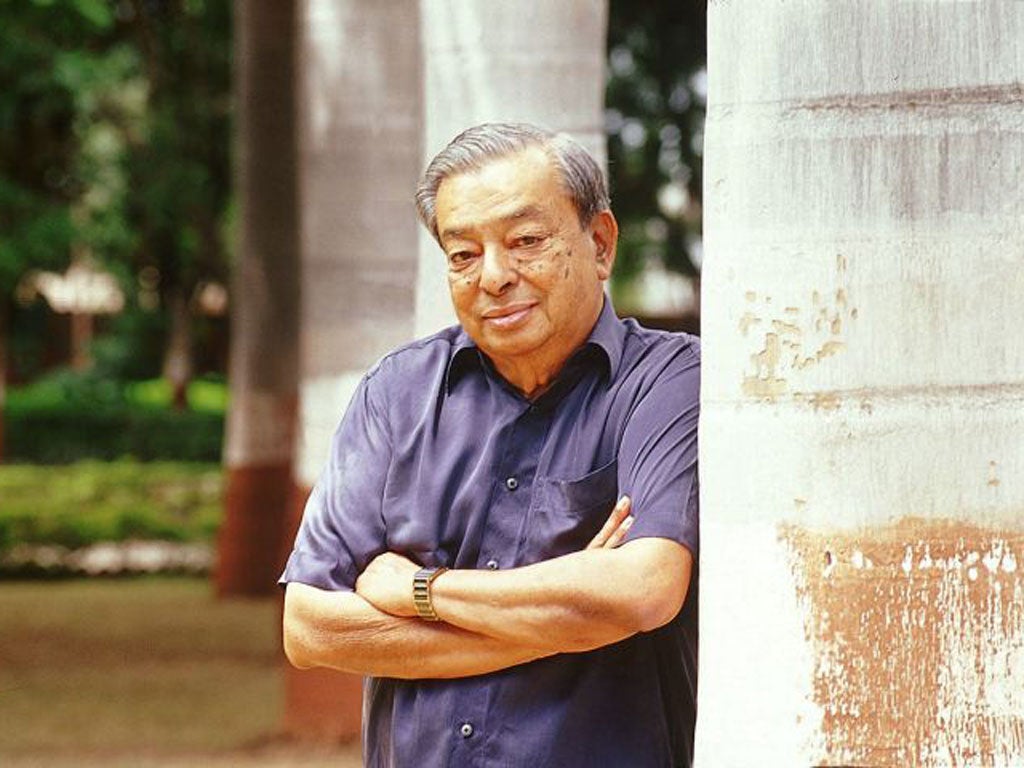Verghese Kurien: Engineer hailed as 'India's milkman'
The 'White Revolution' has been remarkble: India produces 17 per cent of the world's milk

The greatest irony about the achievement of Verghese Kurien – the man who turned India's struggling dairy industry into the biggest in the world – was that he never drank a drop of the stuff himself. "I do not drink milk as I don't like it," he said. Whether he himself drank milk or not was not an issue: in a nation where malnutrition, particularly that of young children, remains rife, the engineer from Kerala transformed milk production, increasing yields fivefold. He was widely known as "India's milkman".
Verghese Kurien, born into a Christian family in the city of Kozhikode, was a young man when he was sent in 1949 on government duty to a state-owned creamery in Anand in the western state of Gujarat – pay-back for having been sent abroad to the US to complete a masters' degree in mechanical engineering at Michigan State University.
After six months, the young engineer was reportedly preparing to leave when Tribhuvandas Patel, who was the chairman of what was then the Kaira district co-operative milk producers union, popularly known as "Amul", asked him to delay his departure and help oversee the overhaul of the co-operative's equipment. Kurien's decision to stay and help the small group of farmers, struggling to get a fair price for their milk against a local cartel of middlemen, has become the stuff of legend. One of his first undertakings was to persuade the farmers to invest in pasteurisation equipment to allow their product to be sold further afield.
Steadily, the Amul brand – the name is derived from a Sanskrit word meaning invaluable – grew into a state-wide cooperative known as the Gujarat co-operative milk marketing federation. With 3.2m members making milk, cheese, butter and ice-cream, today it ranks as the largest dairy brand in Asia. A majority of the co-operative's members are said to be women. (In the early days, Unicef and Oxfam helped with funding.)
The "Amul model" was soon emulated elsewhere in India and in a number of African countries, and in 1965 the man from Kerala was asked to become the first chairman of the government-founded National Dairy Development Board. In 1971, Mr Kurien was asked to head Operation Flood, a government-led undertaking that oversaw India's transformation from a net importer of milk to the world's biggest producer.
Carried out in three phases, the programme looked to the Amul model and established a network of milksheds and village cooperatives across the country. It also made use of funds derived from selling milk powder donated from European nations as part of the world food programme. Another essential factor was developing a process to turn buffalo milk into dry powder; despite the elevated status of cows within Hindu society, buffalos remain more numerous.
In terms of sheer numbers, the results of what became known as the White Revolution were clear. From producing 20m metric tonnes (MMT) of milk a year in 1960, the nation currently produces 122 MMT – around 17 per cent of world production. Per capita consumption of milk has increased from 110g a day in 1970 to 240g today. In 1997, India overtook the US to become the world's largest producer.
But there were other, associated benefits. "I think one of the most important results of the project was that it created employment in more than 100,000 villages across India," said BM Vyas, who was managing director of the co-operative and worked with Kurien for many decades.
Kurien, who in 1999 was awarded the Padma Vibhusan, India's second-highest civilian honour, was a firm believer that the co-operatives led to the social and political empowerment of those involved in the schemes, especially women. In an essay he wrote for a World Bank-sponsored book on poverty alleviation in South Asia, he said cooperatives benefited society. "In a country like India, democracy rests on a fragile foundation," he wrote. "One must underpin democracy with a plurality of rural institutions through which people can take direct control over matters that have an immediate effect on their lives."
All good things must come to end. In 2006, Kurien, having become increasingly protective of the co-operative and concerned about private operators, resigned his position. A former protégé, Amrita Patel, head of the country's dairy development board, wanted to privatise the co-operative sector and Kurien was fiercely opposed to the move.
When he died earlier this month, having been suffering from kidney disease, Prime Minister Manmohan Singh, said Kurien's contribution to the development of India had been "immeasurable". He added: "His greatest contribution was to give a position of pre-eminence to the farmer and his or her interests rather than those of the middleman."
Verghese Kurien, mechanical engineer: born Kozhikode, Kerala, India 26 November 1921; married Molly (one daughter); died Nadiad, Gujarat 9 September 2012.
Join our commenting forum
Join thought-provoking conversations, follow other Independent readers and see their replies
Comments
Bookmark popover
Removed from bookmarks